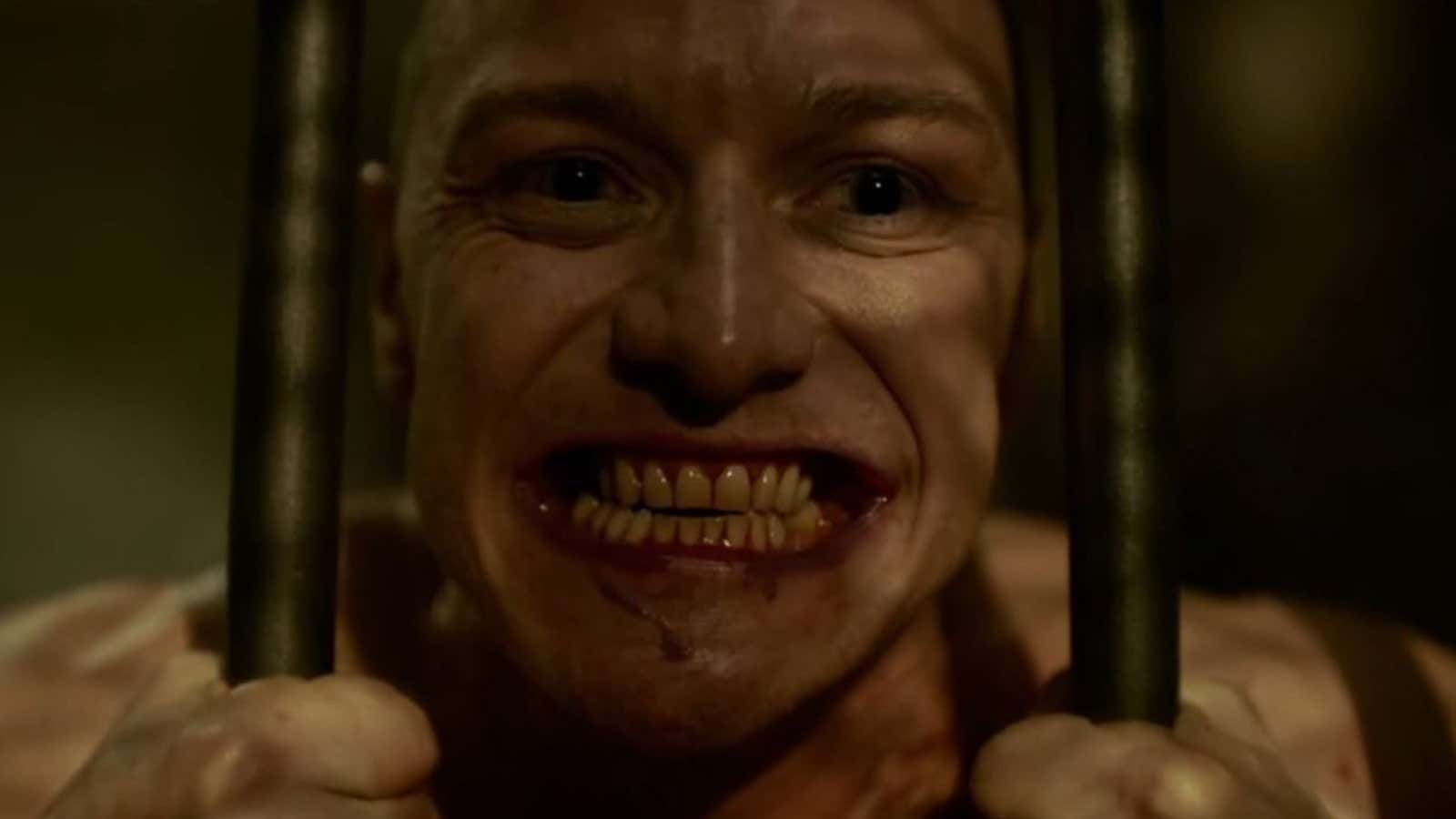Most get-rich-quick investments are scams, and financing movies is undoubtedly a risky proposition. But here’s an investment tip for cinephiles: In Hollywood, there’s no better scheme to turn a quick and easy profit than making a horror movie.
That axiom was validated in a big way this weekend as M. Night Shyamalan’s Split won the US box office for the third week in a row since hitting theaters Jan. 20. The psychological horror-thriller is now the fifth highest-grossing January release ever and has already made back its modest $9 million budget 15 times over.
Horror titles dominate a list of the movies of the last decade that delivered the highest returns in proportion to their investment, according to the respected industry site The Numbers. These films have quietly thrived outside the mainstream Hollywood system by managing to put butts into theater seats despite their low costs to produce. They don’t collect the massive windfalls that big-budget Hollywood blockbusters often do, and most carry considerably less cultural cachet—but they’re also much cheaper to make.
Split, in particular, is a huge win for the genre. The Universal Pictures and Blumhouse Productions movie is the highest-grossing horror since The Conjuring in 2013, and it still has some shelf life in the theaters. The Conjuring opened to a near-identical $40 million, but that film dropped 63% in box office gross in its second week. Split only dropped 36%.
The Shyamalan movie’s resounding success, even by the genre’s lofty standards, can be chalked up to a perfect storm of factors. First, and probably most importantly, audiences (and the majority of critics) like it. Plenty of poorly reviewed horror films have still made back their budgets and then some, but it always helps when, you know, the film is good.
But before anyone even saw Split, it was on a path to prosperity. Some horror films are marketed poorly, which dooms their box office prospects. (Case in point: Rings, the latest entry in The Ring franchise that opened to woeful reviews and a mediocre $13 million weekend, in part because audiences didn’t know if it was a sequel, reboot, or remake.) But Split struck the right tenor in its ads, billboards, and commercials. Its trailer was shown on TV and in theaters so many times that some began to jokingly wonder if Split was just a trailer, and not a real movie.
Plus, the film was already swept into the narrative of M. Night Shyamalan’s triumphant comeback. The maestro responsible for horror classics like The Sixth Sense and Signs had spent the better part of the last 15 years making bad films, including the ridiculous Lady in the Water and the tragically misguided After Earth. Split was Shyamalan’s chance at a redemption—one that he apparently made good upon.
And then, of course, there’s the fact that there isn’t much competition around Hollywood in the dark days of January. The month is infamous for its lackluster entertainment output.
Shyamalan is already planning a sequel, and, given how quickly Split became profitable, the studio is certain to be on board. Not every horror film will match the success of Split, but they don’t need to. (Even Rings is already profitable.) The genre is the closest thing Hollywood has to a sure bet.
